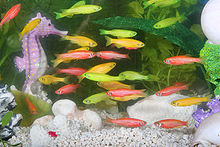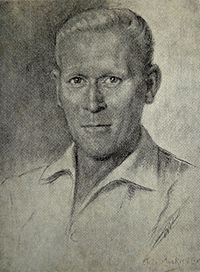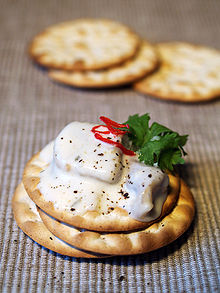A plumber is a tradesperson who specializes in installing and maintaining systems used for potable (drinking) water, sewage, and drainage in plumbing systems.[1] The term dates from ancient times, and is related to the Latin word for lead, "plumbum." A person engaged in fixing metaphorical "leaks" may also be referred to as a "plumber".[citation needed]
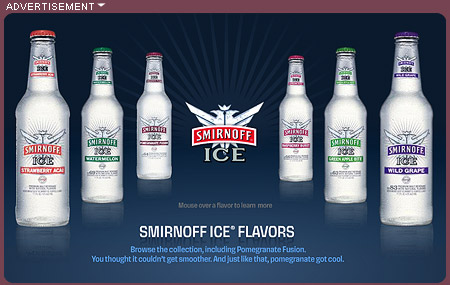
The Plumbers Toolkit
1 Screwdriver Vodka and Orange Juice with nuts.
2 Stilson (Monkey Wrench) Vodka & Blackcurrant (with a Stilton [Galaxy Blue] Cheese on a cracker).
3 Sledge Hammer Vodka and Grapefruit juice (with Dunlop on a cracker.
4 Hack Saw (Smirnoff) vodka and pineapple juice, with cheese on a cracker or cola and pineapple juice. Bacardi Hacksaw: Baccardi and pineapple juice with cheese on a cracker.
5 Tape measure
6 Spade ♠ Vodka & Apple Juice with Camembert on a (Huntly & Palmers or Arnotts) water cracker
7 Bloody Mary Vodka and Tomato juice with cheese and crackers.
8 Vice Grip Vodka & cranberry with a colby on a saltine cracker
9 Needle nose pliers Vodka and Kiwifruit juice (or Kiwifruit and Strawberry juice) with Cheddar cheese (and Whitlock's caramelised onion) on a (Huntly & Palmers) cream cracker.
Socket Set Sake (Rice) [wine] with a cheese on a cracker.
Hoseclip (Vodka and Lime Juice
(with
Tinsnips
Allen Key
Crow bar
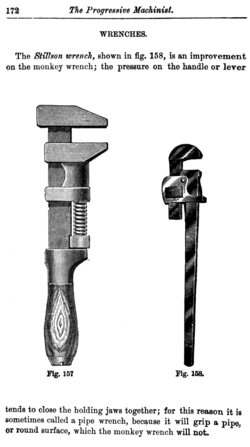
The first pipe or stillson wrench was created by Daniel C. Stillson while working as a mechanic at the Walworth Company.[1] On October 12, 1869, U.S. patent #95,744 was issued to Stillson.[2]
In Prince Edward Island, Canada there is some controversy over the true creator of the wrench. In the island folklore, the wrench was developed by Owen "Iney" McCluskey[3] (or McCloskey[4]), although no proof has ever been presented that would suggest that McCluskey and Stillson ever met.
The fruit has extraordinarily high vitamin C content (302% of the Daily Value per 100 g, table), good levels of potassium, phosphorus, iron and vitamin B5, and a broad range of other essential nutrients (nutrient table, right).
Other phytochemicals in the fruit (polyphenols/anthocyanins) have been demonstrated in laboratory experiments with potential to inhibit inflammation mechanisms suspected to be at the origin of heart disease, cancer, microbial infections or neurological disorders like Alzheimer's disease.[9][10] Major anthocyanins in blackcurrant pomace are delphinidin-3-O-glucoside, delphinidin-3-O-rutinoside, cyanidin-3-O-glucoside, and cyanidin-3-O-rutinoside[11] which are retained in the juice concentrate among other yet unidentified polyphenols.[12][13]
Dunlop is a mild cheese or 'sweet-milk cheese' from Dunlop in East Ayrshire, Scotland.[1] It resembles a soft Cheddar cheese in texture. It fell out of popularity some time after the end of the Second World War, however it has now appreciated for its value in various recipes and for eating on its own or with a dram of whisky.
The local production of Dunlop cheese ceased in around 1940, and has only been sporadic since the Second World War, however Dunlop and other cheeses are as of 2007 made at West Clerkland Farm just outside Stewarton on the Dunlop Road, and are also produced on Arran, Islay and elsewhere.
The Dunlop Cheese factory was sited near Dunlop railway station in what is now a housing estate, the memory of Dunlop cheese production being kept alive by the name 'Creamery Row'.
NGC 4414, a typical spiral galaxy in the constellation Coma Berenices, is about 55,000 light-years in diameter and approximately 60 million
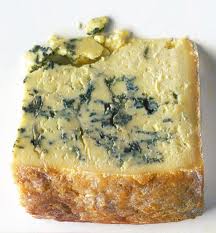
Stilton Cheese
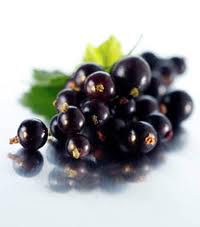
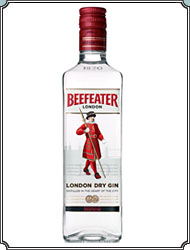
Genetically engineered glow in the dark zebra fish? Surely not?
Turn off Kennington Road into Montford Place. On your right is a Tesco and, beyond, the hummocks of deflated gasometers. Opposite them is a fine Victorian building, once red as a guardsman's tunic, now darker, weathered by wind and rain. The words "Established 1820" stretch across the door, and up near the roof is the single word "Beefeater".
The borzoi (/ˈbɔrzɔɪ/, literally "fast") is a breed of domestic dog (Canis lupus familiaris) also called the Russian wolfhound and descended from dogs brought to Russia from central Asian countries. It is similar in shape to a greyhound, and is also a member of the sighthound family.
The system by which Russians over the ages named their sighthounds was a series of descriptive terms, not actual names. "Borzói" is the masculine singular form of an archaic Russian adjective that means "fast".[1] "Borzáya sobáka" ("fast dog") is the basic term used by Russians, though the word "sobáka" is usually dropped. The name "Psovaya" derived from the word Psovina, meaning "wavy, silky coat", just as "Hortaya" (as in Hortaya Borzaya) means shorthaired. In Russia today the breed we know as borzoi is therefore officially called "Russkaya Psovaya Borzaya". Other Russian sighthound breeds are "Stepnaya Borzaya" (from the steppe), called "Stepnoi"; and "Krimskaya Borzaya" (from the Crimea), called "Krimskoi".
The plural "borzois" may be found in dictionaries. However, the Borzoi Club of America asserts "borzoi" is the preferred form for both singular and plural (in Russian, the plural is actually "borzýe"). At least one manual of grammatical style rules that the breed name should not be capitalized except at the beginning of a sentence; again, breed fanciers usually differ, and capitalize it wherever found.[2]
- The borzoi is the symbol of Alfred A. Knopf publishing house.
Minute Maid is a product line of beverages, usually associated with lemonade or orange juice, but now extends to soft drinks of many kinds, including Hi-C. Minute Maid is sold under Cappy brand in Central Europe and under Fruitopia in Germany.
Cranberry Punch, Grape Punch, Mango Punch,
Orange Guava Punch, Peach Punch, Raspberry Punch, Orange Punch,
Cranberry Cocktail, Pink Grapefruit Cocktail, Strawberry
Cappy is a fruit juice and fruit-flavored soft drink brand in Central and Eastern Europe, now owned by The Coca-Cola Company.
Apple, Apple Apricot Orange, Apple Mint, Apple Peach, Apple Pear, Apricot, Cherry, Citrus Blend, Citrus Orange, Currant, Exotic, Fruit Punch, Grape, Grapefruit, Grapefruit Orange, Kiwi Lemon, Lemon, Orange, Grapefruit and Lychee, Orange Pineapple, Orange Tangerine, Orange Tangerine Lemon, Peach, Pear, Pineapple, Red Fruits, Sour Cherry, Strawberry, Tomato and Watermelon
| Claw hammer | |
| Various adjustable wrenches | |
| Multi tip screwdriver | Ball-pien hammer |
| Regular and stubby screwdrivers | Needle-nose pliers |
| Side cutters | |
| Cold/wood chisels | 2ft level |
| Allen keys imperial/metric | Socket set |
| Files, round/flat | |
| Shovels, long/short | |
| Caulking gun | |
| Safety, Gloves/goggles/ear plugs | Polygrips |
| Flashlight, small/large | Drywall knife/ box cutter |
| Trowel | Hand saw |
| Hole saw kit | Wire strippers |

Huntley & Palmers was a British firm of biscuit makers originally based in Reading, Berkshire.[1] The company created one of the world's first global brands and ran what was once the world’s largest biscuit factory. Over the years, the company was also known as J. Huntley & Son and Huntley & Palmer.
A biscuit business of the same name has recently been re-established in Sudbury, Suffolk. Since 1985 the New Zealand firm Griffin's Foods, make Huntley and Palmers biscuits under licence.[2]
Huntley & Palmers was founded in 1822 by Joseph Huntley as J. Huntley & Son. Initially the business was a small biscuit baker and confectioner shop at number 72 London Street. At this time London Street was the main stage coach route from London to Bristol, Bath and the West Country. One of the main calling points of the stage coaches was the Crown Inn, opposite Joseph Huntley's shop and he started selling his biscuits to the travellers on the coaches. Because the biscuits were vulnerable to breakage on the coach journey, he started putting them in a metal tin. Out of this innovation grew two businesses: Joseph's biscuit shop that was to become Huntley & Palmers, and Huntley, Bourne and Stevens, a firm of biscuit tin manufacturers founded by his younger son, also called Joseph.[3]
GOUDA
One of Holland’s most famous cheeses.
Italy’s oldest blue cheese.
GRUYERE
The famous cheese from Switzerland.
COLBY
American.
CREAM CHEESE
American.
DEVONSHIRE
English. Soft, unripened cream cheese
One of Holland’s premiere cheeses
Mild Edam goes well with fruit such as peaches, melons, apricots, and cherries. Aged Edam is often eaten with traditional "cheese fruits" like pears and apples. Like most cheeses, it is commonly eaten on crackers and bread. Pinot gris dry Riesling, semidry Riesling, Champagne, Chardonnay and Shiraz/Syrah are some recommended wines to accompany this cheese.[4]
DUNLOP
Scottish.
GRUYERE
The famous cheese from Switzerland.


